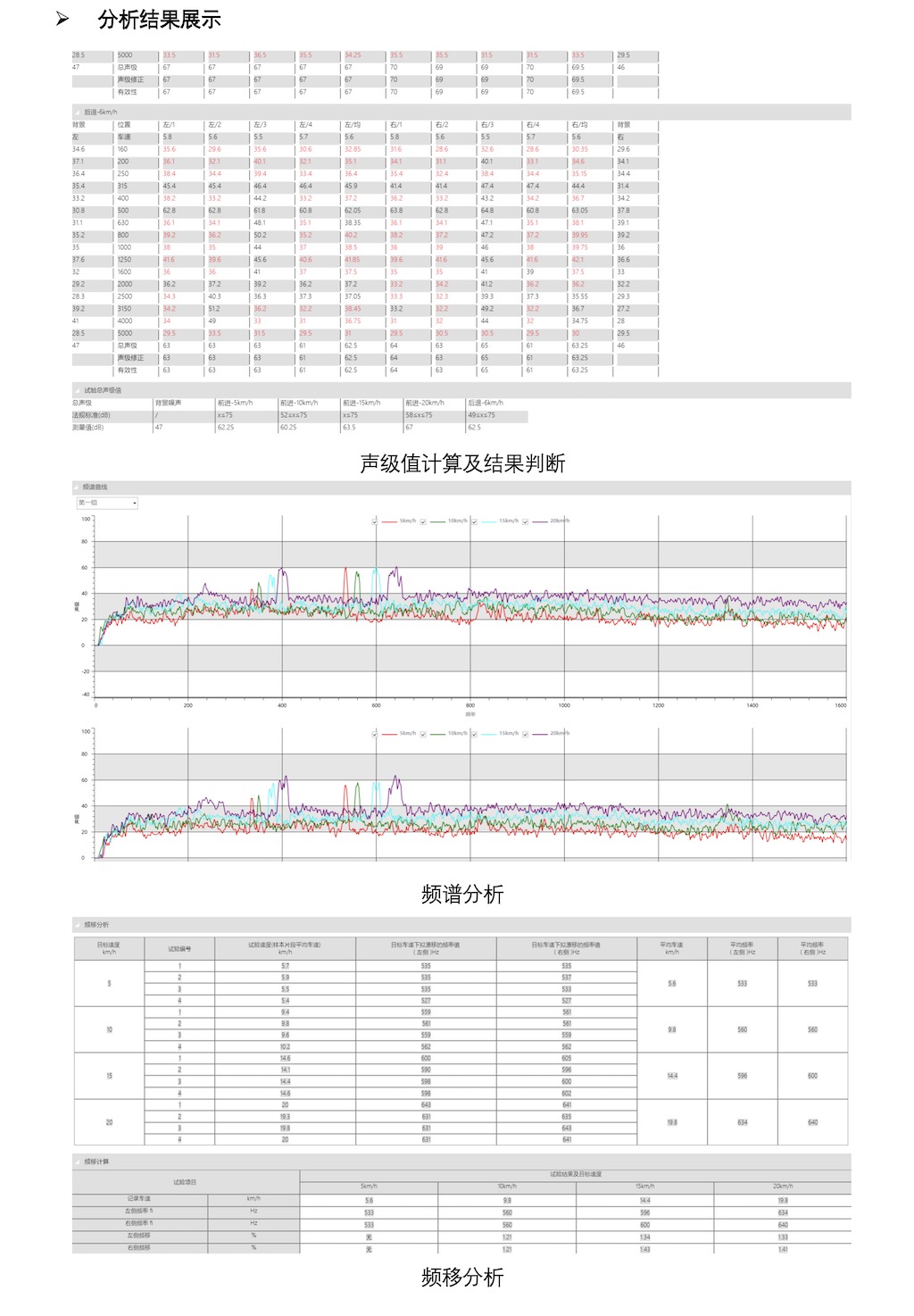ZR-TLOG-AVAS low-speed prompt sound testing system
Background Overview
AVAS (Acoustic Vehicle Alerting System), also known as Vehicle Sound Alert System, is an important safety device for electric vehicles. When the vehicle is driving at low speed, it will automatically emit a warning sound to alert pedestrians or road users of the presence of the vehicle, in order to reduce the risk of collision between the vehicle and pedestrians.
The mandatory standard GB7258-2017 "Technical Conditions for Motor Vehicle Operation Safety" in China stipulates that "pure electric vehicles and plug-in hybrid electric vehicles should be able to emit appropriate warning sounds to people outside the vehicle when the vehicle starts and the speed is below 20km/h.
On July 1, 2019, China officially implemented the recommended national standard GB/T37153-2018 "Low speed warning sound for electric vehicles", which specifies the speed range, sound level limit, frequency requirements, sound type, and pause switch requirements and test methods for the low-speed driving warning sound of electric vehicles.

Introduction to the national standard low-speed prompt sound test method
The tests specified in GB/T37153-2018 "Low speed Warning Sounds for Electric Vehicles" mainly include "Vehicle Sound Level Test" and "Frequency Shift Test", which can be conducted outdoors or indoors. The vehicle state during the experiment can be selected to operate the vehicle while it is actually driving or to choose the vehicle to be stationary and simulate the speed signal for the low-speed prompt sound system. The following is a summary of the method for conducting low-speed warning sound tests on vehicles while driving outdoors.
1. The installation position of the microphone is shown as P and P 'in Figures 1 and 2. The distance from it to the CC line is 2.0m ± 0.05m, and it should be 1.2m ± 0.02m above the ground surface. The reference direction should be kept horizontal and perpendicular to the CC 'line where the vehicle is running.

2. The measurement of background noise is to determine the effectiveness of subsequent experiments and to correct the test results.
3. Vehicle Sound Level Test
3.1 Uniform Speed Test When testing in an outdoor field, the path of the vehicle centerline should follow the CC line as much as possible throughout the entire test. The front plane of the vehicle should pass through the AA 'line at the beginning of the test, and the rear plane of the vehicle should pass through the BB' line at the end of the test, as shown in Figure 1. During the entire operation, the vehicle should maintain a constant test speed for at least 5 seconds. When the constant test speed is 10km/h, the speed should be controlled between 10km/h and 2km/h. When the speed is 20km/h, the speed should be controlled between 20km/h and 1km/h.
3.2 During the outdoor field test of the reverse test while the vehicle is in motion, the path of the vehicle centerline should follow the CC line as much as possible throughout the entire test. The rear plane of the vehicle should pass through the AA 'line at the beginning of the test, and the front plane of the vehicle should pass through the BB' line at the end of the test, as shown in Figure 2. During the entire operation process, the vehicle should maintain a constant test speed for at least 5 seconds, with a reverse constant speed test speed of 6km/h, and the test speed should be controlled between 6km/h and 2km/h.
4. Frequency shift test (outdoor field whole vehicle operation test) measures the sound emitted by the vehicle during acceleration from 5km/h to 20km/h in steps of 5km/h. During this acceleration process, the acceptable error range is ± 2 km/h when the vehicle speed is below or equal to 10 km/h, and ± 1 km/h when the vehicle speed is above 10 km/h. 5 km/h is the minimum target speed. If the vehicle cannot operate at the given precision speed, a minimum speed lower than 10km/h should be used as a substitute.
5. Analyze and calculate the total sound level value, drift frequency, and frequency shift characteristics based on test data
ZR-TLOG-AVAS low-speed prompt sound testing system
The low-speed prompt sound testing system consists of a data acquisition host, left and right sound acquisition boxes, left and right microphones, microphone calibrators, vehicle front and rear triggers, communication bridges, etc. It can achieve a highly automated testing system. The system collects and uploads data in real time to a computer through networking, and the computer software analyzes and processes the data in real time and generates results.



The ZR-TLOG-AVAS low-speed prompt sound testing equipment not only meets the testing requirements of the national standard GB/T37153-2018 "Low speed prompt sound for electric vehicles", but also meets the testing requirements of the European standard ECE R138. In addition, the equipment can also meet the testing requirements of GB1495-2020 "Limits and Measurement Methods for External Noise of Accelerating Vehicles" after expansion. Testers only need one set of equipment to meet various noise testing needs. Contact us for more noise testing solutions.